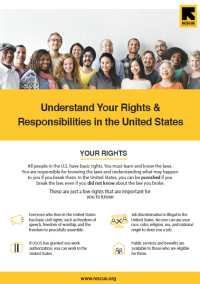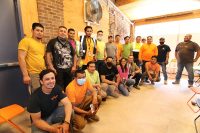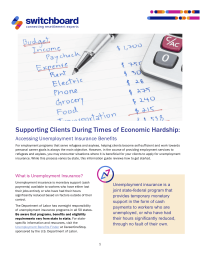This flyer, produced by the International Rescue Committee, describes important laws and rights that apply to everyone who lives and works in the United States. These include U.S. laws surrounding violence and exploitation, discrimination, and child abuse and neglect. The flyer also shares information about civil rights and the right to work. This flyer is […]










